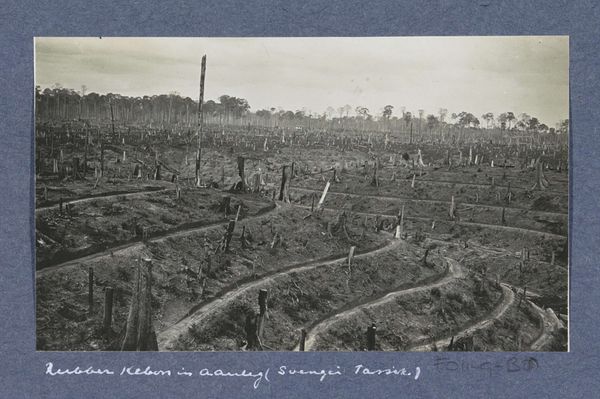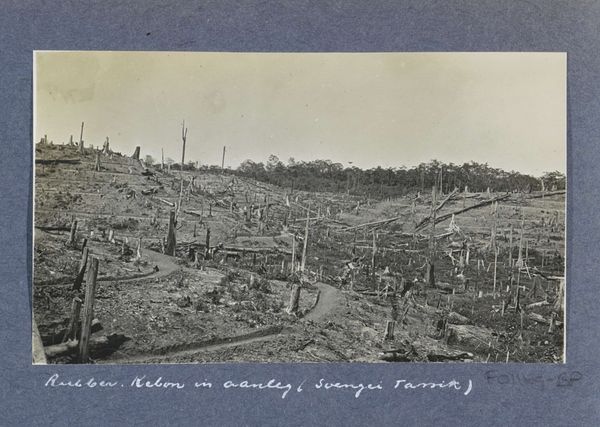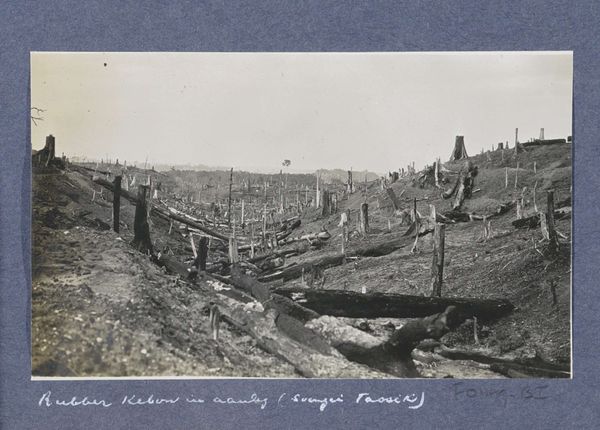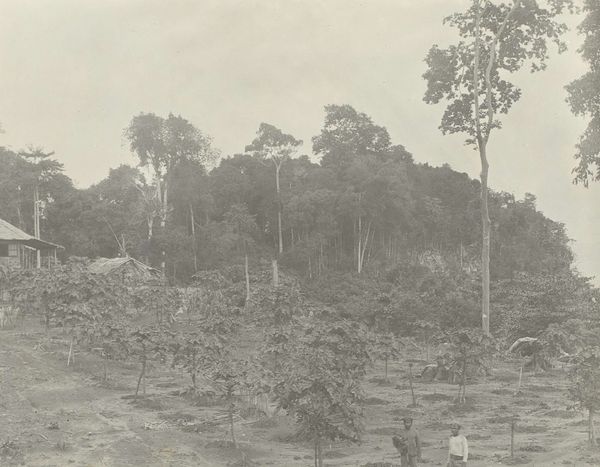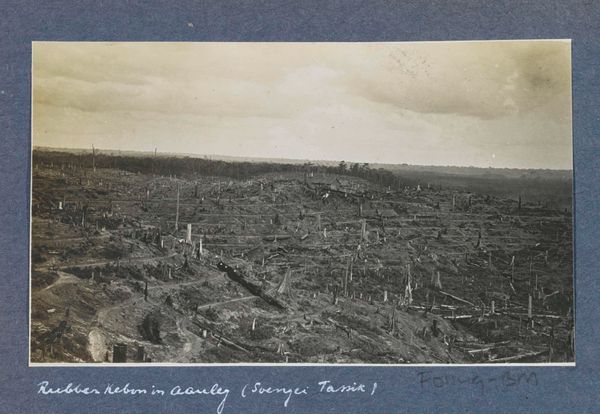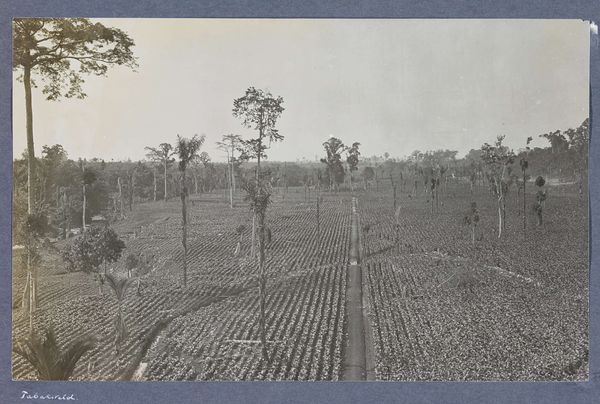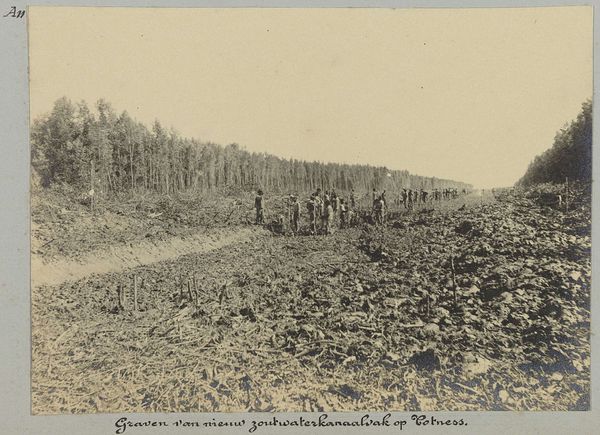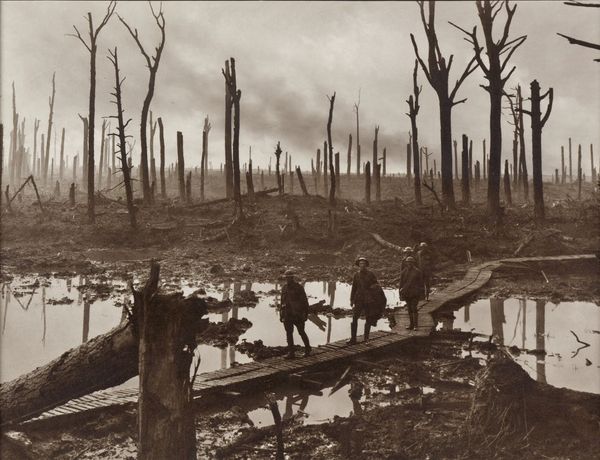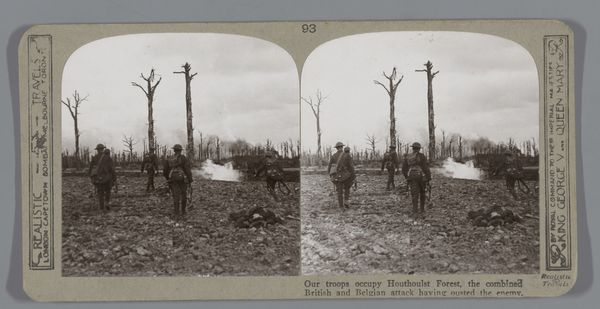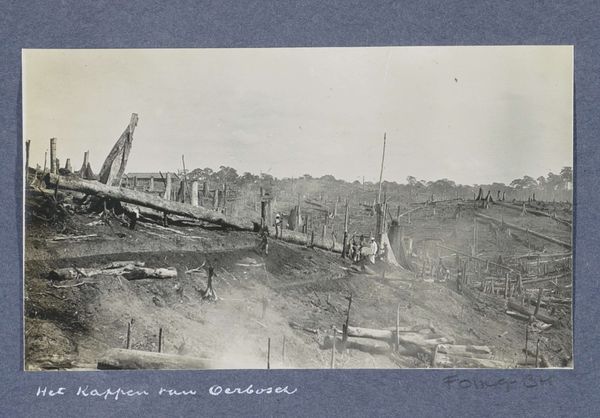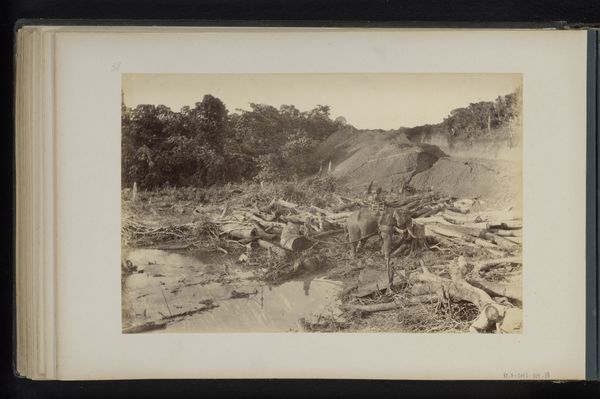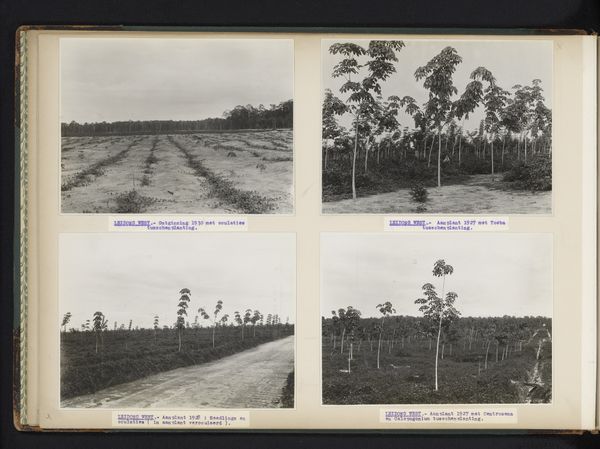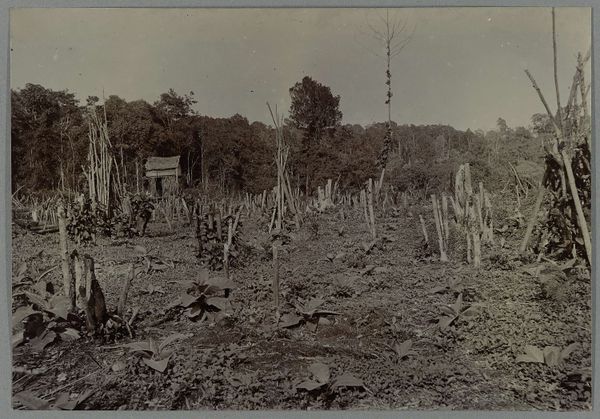
Aanleg van een rubberplantage van de Deli Maatschappij bij Soengei Tassik op Sumatra c. 1900 - 1920
0:00
0:00
photography
#
landscape
#
photography
#
photojournalism
Dimensions: height 78 mm, width 134 mm
Copyright: Rijks Museum: Open Domain
Curator: This stark image shows "Aanleg van een rubberplantage van de Deli Maatschappij bij Soengei Tassik op Sumatra," a photograph from sometime between 1900 and 1920, now in the Rijksmuseum collection. Editor: My first impression is of… devastation. An environmental scar writ large. It evokes such a strong feeling of loss, despite the muted tones of the old photograph. Curator: Indeed. Even the arrangement, the geometry, carries somber connotations. Observe the remaining tree stumps that stand like gravestones. And how this disturbing motif stretches into the depths of field. The photographer perhaps understood the deeper implications. Editor: And there's such loaded context to unpack when we consider the Deli Maatschappij—a company deeply embedded in the exploitative colonial economies of Sumatra. This isn't just landscape photography; it's photojournalism that unintentionally lays bare the brutal cost of rubber production. Curator: It makes one consider what symbols were readily accepted and visible then, against today’s more critical gaze. The straight lines and visible order almost sanitize the deforestation. Roads are neatly carved as if the industrial exploitation of labor and land is a virtuous act of development. Editor: Absolutely. And look at the lone structure atop the small rise, a stark symbol of control and resource extraction, further reinforced by those meticulously carved roads as symbols of domination cutting through what was likely once dense and biodiverse terrain. Curator: The photo certainly reflects how colonial expansion imprinted itself not only upon the land but also on the visual imagination. Consider its lasting visual and psychological impact on how such interventions are remembered and repeated across the colonized world. Editor: This photograph powerfully shows a past we still grapple with today. Its symbolism is clear—the relentless march of industry leaves a deep wound. Seeing this makes the ongoing struggle for environmental justice feel even more urgent and deeply connected to colonial histories.
Comments
No comments
Be the first to comment and join the conversation on the ultimate creative platform.
